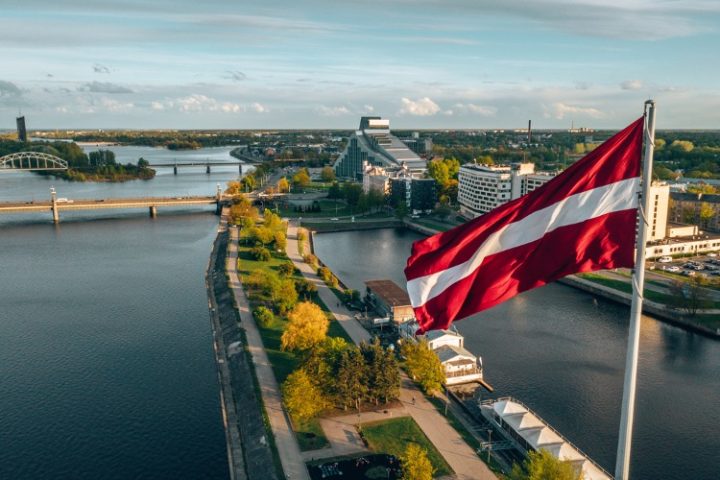
The European migrant crisis has spilled over to Latvia. But, unlike their counterparts in Western Europe and the United States, authorities in the Eastern European nation aren’t taking the invasion lying down.
This week, Latvia deployed additional border agents, as well as the military, to deal with a flow of migrants at the Belarusian border and the coast. In a statement to RT, the Latvian government said the decision was a response to “the rapidly growing hybrid threat” in the region, explaining that in the past 24 hours alone it had recorded 96 illegal border-crossing attempts.
In 2021, Belarus emerged as a major transit point for migrants from the Middle East attempting to make it to Europe. Poland has been the most affected nation of this mass migration, but the Baltic states of Latvia and Lithuania have also been hit. Latvian authorities say that since the start of this year, there have been almost 6,000 attempts by migrants to cross the border from Belarus.
Citing a “disproportionately large number of cases of illegal crossings,” the Latvian government last week made the announcement of a boosted security protocol on the Belarusian border.
To meet personnel demands prompted by the migrant crisis, Latvia is canceling vacations for its officers. “For the time being, the granting of annual leave to State Border Guard officials is stopped and the officials who are currently on annual leave are withdrawn from it,” the Latvian State Border Guard said in its statement to RT.
The agency also alleged “increased involvement of the Belarusian authorities in organizing the flow of illegal immigrants.” However, the Belarusian government has repeatedly denied that it is helping migrants in their attempt to reach European Union countries such as Poland, Latvia, and Lithuania.
The outlet further reported:
In introducing enhanced security measures at the border, Latvia follows the example of Poland, which said last week it would deploy 10,000 troops along its boundary with Belarus. Warsaw also cited migration pressure as well as alleged infiltration efforts by operatives working for the Russian defense contractor Wagner Group. In addition, earlier this month Poland claimed that two Belarusian helicopters violated its airspace, a charge Minsk has vehemently denied.
Migration from the Middle East and north Africa has been a major point of contention across Europe.
In Italy, the explosion of migration from the Muslim world contributed to the electoral victory last October of the right-wing party Brothers of Italy, helmed by Prime Minister Giorgia Meloni. Although Meloni and her party promised to crack down on illegal entries, the migration issue has persisted — with the country’s Ministry of the Interior reporting that more than 100,000 migrants have arrived on Italian shores this year. This is more than twice the number from the same period in 2022.
The biggest share of this year’s migrants come from Guinea and the Ivory Coast, with Egypt and Tunisia being the next-largest contributors of migration. And of the 100,000 migrants, only about a tenth — 10,286 — were unaccompanied minors.
One of the measures Italy has taken under Meloni’s leadership has been to take action against private organizations that facilitate mass migration. For example, the government passed a law banning civil sea-rescue organizations — private groups which have taken it upon themselves to rescue migrants involved in shipwrecks on their way to Europe (and in so doing bring them to Europe) — from carrying out multiple rescue operations during one mission and giving the government the power to impound ships found in violation of this rule.
Meloni’s other efforts include fighting criminal organizations trafficking migrants, better managing flows of migrants, supporting refugees, and helping countries of origin.
In fact, Meloni struck a deal with the United Arab Emirates to make funds available for Mediterranean countries to improve their conditions at home and thus decrease the need for migration.
But in one move that seemingly goes contrary to efforts to discourage migration, Meloni recently revealed the Italian government would be granting 452,000 work visas for non-EU nationals from 2023 to 2025. This is a sharp increase compared to the 30,850 permits that were issued in 2019. The Meloni government cites labor shortages in several industries due to an aging and declining population.
Italy has been experiencing a decline in births every year since 2008. The country had an average of 1.25 babies per woman for 2022, well below the replacement number of 2.1 births per woman. In fact, according to the Italian National Institute of Statistics (ISTAT), the country had just 393,000 births in 2022, with 12 deaths for every seven births, the lowest since records began in 1861.
Meanwhile, across the Atlantic, the migrant situation has been no less catastrophic in the United States. This can clearly be seen in New York City. While the Big Apple once held up its status as a Sanctuary City with pride and celebration, it is now at a breaking point, with neither the space nor funds to house the thousands of migrants pouring in, resulting in hordes of migrants sleeping on the streets of New York.




